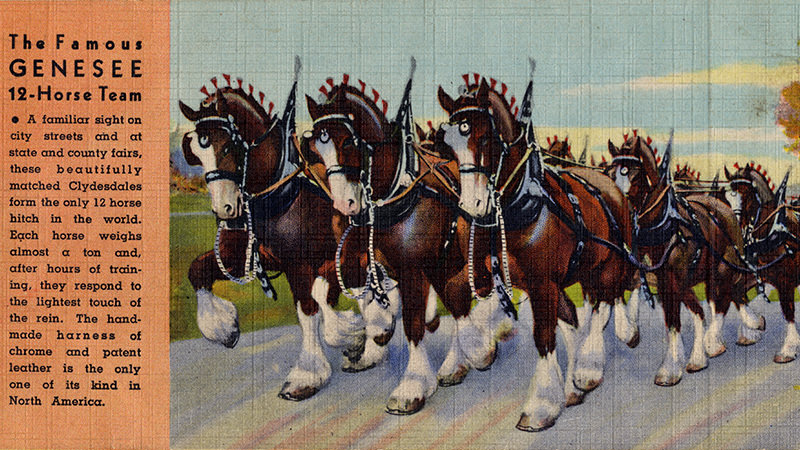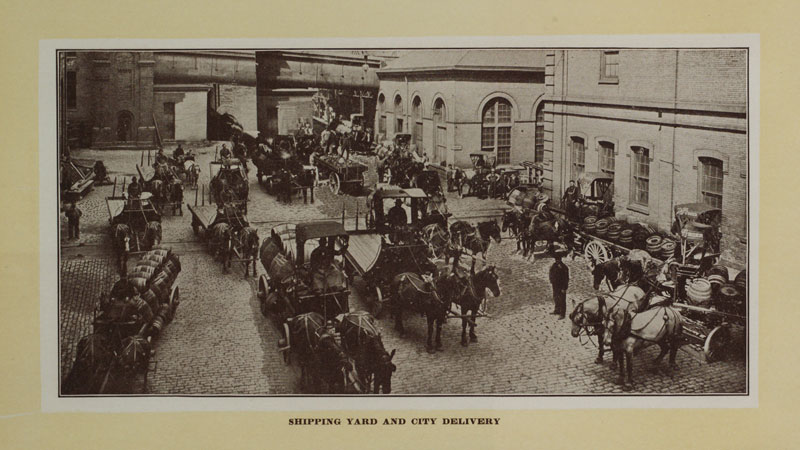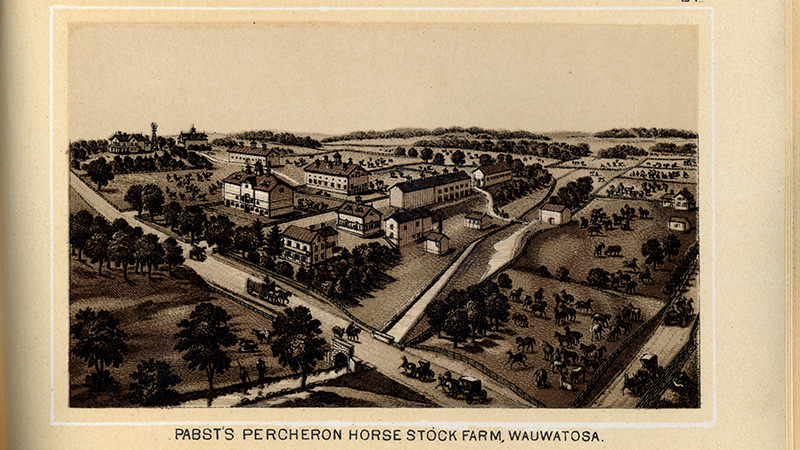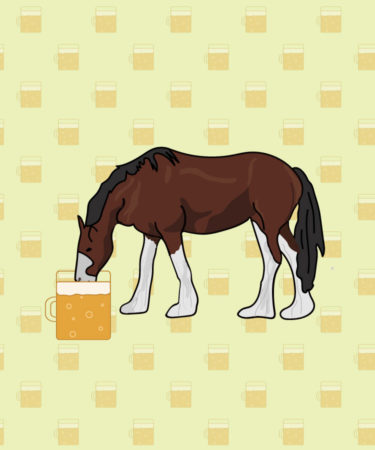Equestrians praise Clydesdale horses for their “gentle nature, high-stepping action, and calm temperament,” but most Americans are familiar with this Scottish breed for one reason alone: Anheuser-Busch.
In its annual Super Bowl commercials for Budweiser, Anheuser-Busch depicts pastoral American scenes in which the fuzzy-footed Clydesdales pull barrels of beer through barley fields. The horses are used ceremonially in parades, and are pictured on Budweiser merchandise.
Despite being famously tied to Budweiser, these animals and other draft horses like them were used by almost all American breweries in the mid-1800s to early 1900s. The horses pulled beer from brewhouses to public houses throughout brewing communities. Genesee Brewing used Clydesdales to deliver its beer, and Pabst, Schlitz, and other brands used similar breeds. The practice began in the 1800s and continued as late as the 1920s.
“Most breweries were local then, and served the whole community,” Joe Hursey, archivist and self-described “beer geek” at the National Museum of American History, Smithsonian, tells VinePair. Local beer deliveries consisted of “wagons loaded up” with what “had to be tons of beer,” he says, with barrels stacked on top of one another, two horses pulling the precious cargo.

“Clydesdales are the [breed] we recognize because of Budweiser,” Hursey says, but there were dozens of other breeds used by several breweries. In fact, large horse breeds like Clydesdales, Percherons, Belgians, and Dunns were so important to American breweries that many bred their own. In Pabst Brewing’s tour book in the Smithsonian archives, for example, there is an image of the Pabst Percheron horse stock farm. Schlitz also had a stable on its property for this specific purpose.
“The draft horses came from Europe, where many of the brewers also hailed from, so they knew about these animals and their work capability,” Hursey says. These breeds were “used heavily for farming,” and were brought over by European immigrants for breeding.


Draft horses “are much different than the common riding horse of the time,” Hursey says. “Most riding horses during this period averaged from 750 to 1,200 pounds, while draft horses like the Clydesdale, Belgian, and Percheron averaged about 1,700 to 2,200 pounds; they were the bulldozers of their time,” he says.
The horses even have a history as “medieval war horses that knights would use, because they can take the weight,” Hursey says. “They have a long history of being very large workhorses,” he says. And no, he was not referring to the Bud Light Knight.
